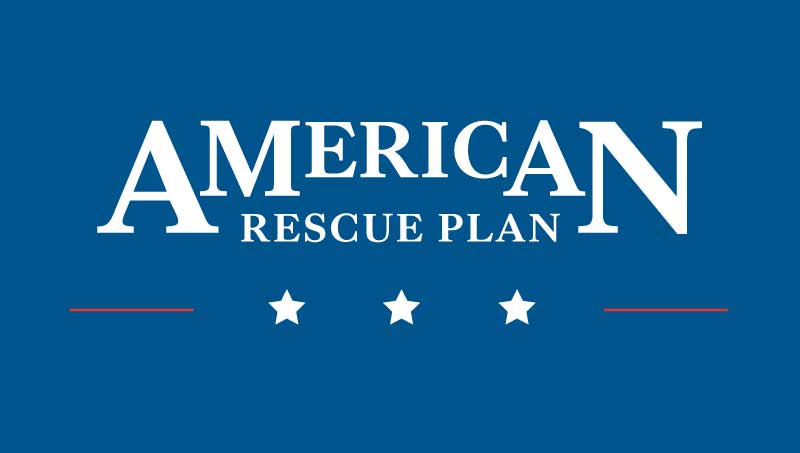On March 17, 2021, the IRS officially postponed the tax return filing and payment deadline for individual taxpayers from April 15, 2021 to May 17, 2021. This postponement includes any Self-Employment Tax payable by individual taxpayers who are self-employed. The postponement, however, does not extend the due date for 1st Quarter 2021 Estimated Tax payments; these payments are still due by April 15, 2021.
Additionally, on March 12, 2021, President Biden signed into law the “American Rescue Plan Act of 2021”. Below is a brief summary of the most significant tax provisions for individuals covered under the Act.
- Recovery Rebate Credit
Also called the “Economic Impact Payment”, “stimulus payment”, or “survival check”, this payment is technically a 2021 tax credit paid in advance. The maximum credit is $1,400 per person, including dependent children, college students, and qualifying dependent relatives. The credit phases-out based on income level.
- Single taxpayers with Adjusted Gross Income (AGI) under $75,000 will receive the full credit; the credit phases out completely once AGI exceeds $80,000.
- Married Filing Jointly taxpayers with AGI under $150,000 will receive the full credit; the credit phases out completely once AGI exceeds $160,000.
- Head of Household taxpayers with AGI under $112,500 will receive the full credit; the credit phases out completely once AGI exceeds $120,000.
Such narrow phase-out ranges could lead to some unusual results. For example, a large family could find itself economically better off earning $150,000 and receiving the maximum credits, rather than earning $160,000, paying additional income tax on the extra $10,000, and receiving no credits.
The credit will be initially calculated based on the taxpayer’s most recently-filed tax return (2019 or 2020). If the credit is phased-out based on the 2019 return, then it will be recalculated once the 2020 return is filed. If the credit is phased-out based on the 2020 return, then it will be recalculated once the 2021 return is filed. This means that most taxpayers will have three opportunities to qualify for the credit.
- Child Tax Credit
The Child Tax Credit has been increased to $3,000 per child for 2021 and will be partially paid in advance during the year. Furthermore, the Child Tax Credit is now fully refundable. In a departure from previous rules, 17-year-olds are now considered children. Additionally, the credit for children under 6 years old will be $3,600. The credit is composed of two parts: the “old” $2,000 component and the “new” $1,000 component (or $1,600 if the child is under 6 years old).
The credit’s $2,000 component begins to phase out at the following income levels:
- Single taxpayers with Adjusted Gross Income (AGI) over $200,000.
- Married Filing Jointly taxpayers with AGI over $400,000.
- Head of Household taxpayers with AGI over $200,000.
The credit’s $1,000 component begins to phase out at much lower levels:
- Single taxpayers with Adjusted Gross Income (AGI) under $75,000 will receive the full credit; the credit phases out completely once AGI exceeds $80,000.
- Married Filing Jointly taxpayers with AGI under $150,000 will received the full credit; the credit phases out completely once AGI exceeds $160,000.
- Head of Household taxpayers with AGI under $112,500 will receive the full credit; the credit phases out completely once AGI exceeds $120,000.
- Child & Dependent Care Credit
For the Child & Dependent Care Credit, the eligible expense limits have been substantially increased for 2021 – from $3,000 to $8,000 for one qualifying child, and from $6,000 to $16,000 for two more children. Also, the credit is now refundable. For taxpayers with AGI under $185,000, the credit will be higher than prior years. For taxpayers with AGI between $185,000 and $400,000, the credit will be the same as in prior years. For taxpayers with AGI exceeding $400,000, the credit will be lower than in prior years. The credit phases out completely once AGI exceeds $440,000.
- Dependent Care Benefits
For taxpayers who receive childcare assistance benefits through their employer, the maximum benefit amount excludable from income has been increased from $5,000 to $10,500.
- Student Loans
In most cases, the discharge of student loan debt for tax years 2021-2025 is no longer includible in income. Previously, this kind of debt forgiveness would have been includible in income.
- Unemployment Compensation
For tax year 2020, up to $10,200 of unemployment compensation is excludable from income, provided that the taxpayer’s AGI is below $150,000. The $150,000 threshold is the same for both single taxpayers and married couples. Consequently, in some cases where combined income exceeds $150,000, it may be beneficial for married couples to file separate returns in order to access the exclusion.
Please let us know if you have any questions.


